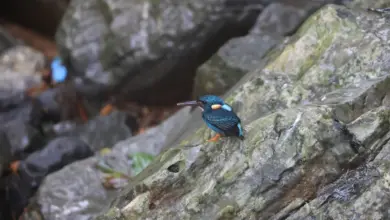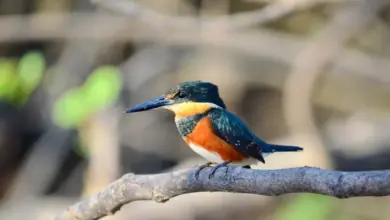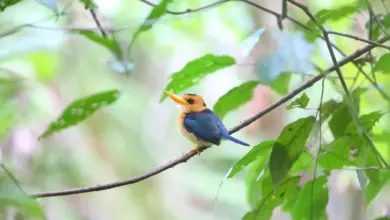Amazon Kingfishers
Amazon Kingfishers (Chloroceryle amazona)
The Amazon Kingfishers (Chloroceryle amazona) occurs naturally in the Americas.
Distribution / Range
The Amazon Kingfishes reside in the tropical lowlands of Southern Mexico, south through Central America to northern Argentina, with at least one bird having strayed north to Texas.
Records from Trinidad are thought to be erroneous.
These are resident (non-migratory) birds.
They are the most likely green kingfishers to be seen on large rivers.
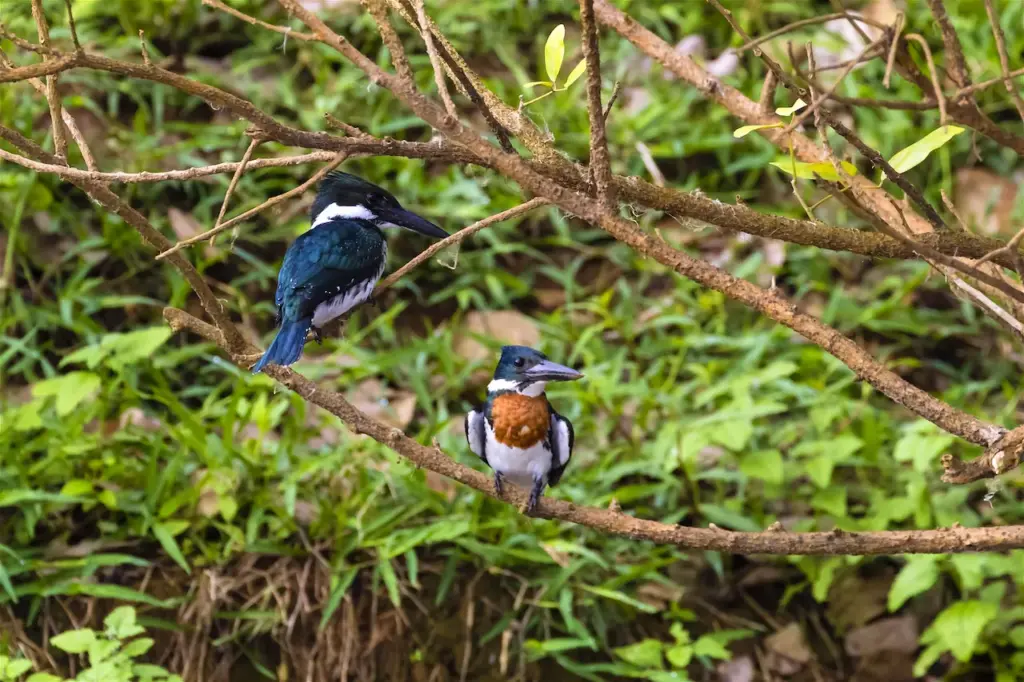
Description
The Amazon Kingfisher measures about 29-30 cm in length and weighs ~ 110g.
This petite, brightly coloured bird possesses dark blue or green wings, a tail, and a head. It is green above, with a shaggy crest and a white collar around the neck.
It has the typical Kingfisher shape, with a short tail and long bill. All Kingfishers are known for their stocky bodies, large heads, and long, thick, sharply pointed bills, shaped like a dagger. The bill seems disproportionate to the rest of the body, but it is designed for impaling and capturing its prey. Their legs are short and their tails broad and stout. Their strong feet support them while perching on branches.
Males have white underparts apart from a broad chestnut breast band and some green streaks on the flanks.
The female’s plumage is less bright than the male’s. She has white underparts with green patches on the side of the chest and green flank streaks.
Juveniles resemble the adult female but have white spots on the wings.
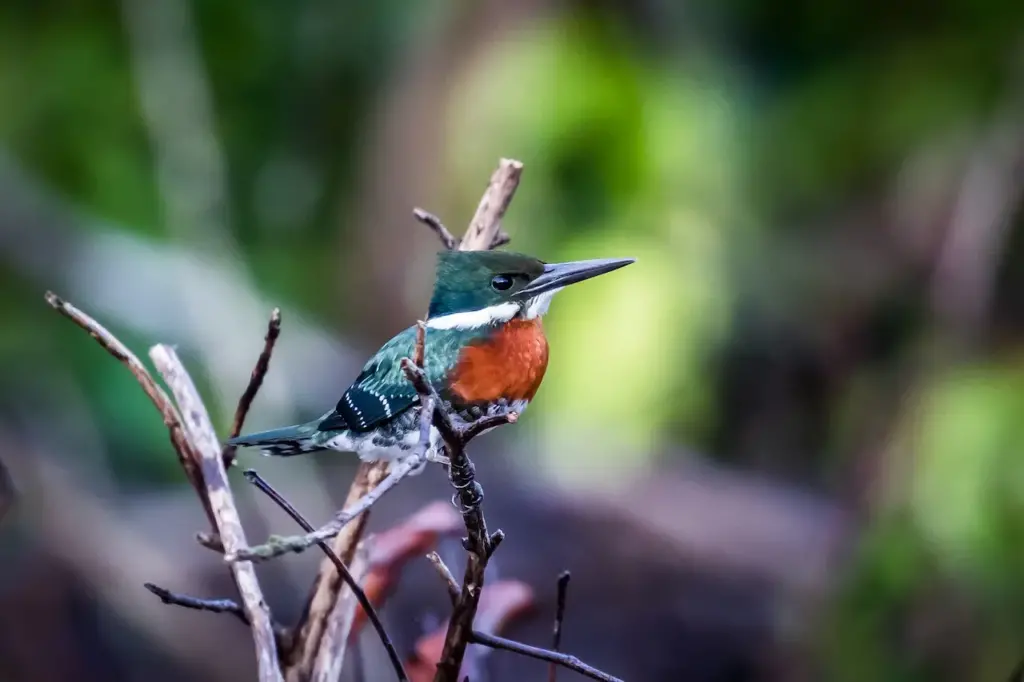
Similar Species:
The Amazon Kingfisher resembles the Green Kingfisher which shares its range, but it is much larger than its relative, and three to four times as heavy. It lacks the white markings on the wings shown by the Green Kingfisher.
Breeding / Nesting
This large kingfisher breeds by streams. The unlined nest is in a horizontal tunnel made in a river bank, and up to 1.6 m long and 10 cm wide.
The nests are constructed by both males and females. They will take turns burrowing out a tunnel with their feet, and then they will hollow out a narrow chamber at the end of the tunnel in which to lay their eggs. The birds will spend between three and seven days working to complete their tunnel. Some birds attack their worksites so forcefully that they have fatally injured themselves as they fly into the tunnels during these excavations.
The female lays three, sometimes four, white eggs. Both parents incubate the eggs.
The hatchlings are altricial (naked, blind, and helpless) and require care and feeding by the parents, who bring the food into the nesting chamber. But they grow fast, and soon the chicks can travel toward the entrance of the tunnel where they encounter the adults and wait to be fed. Eventually, they are fed on a perch near the entrance. Fledging can last a few days to a few weeks. After that, the young will be on their own and can feed themselves.
Diet / Feeding
Amazon Kingfishers are often seen perched on a branch or rock close to water before plunging in head first after their fish prey. They will also feed on insects and other amphibians, such as small reptiles and crustaceans.
They have a well-developed vision. Their dark brown eyes can see colors distinctly and are even capable of binocular vision. They can move their eyes within the eye sockets rather than having to rotate their entire heads to follow their prey. An unusual adaptation they possess is the ability to compensate for the water’s refraction and reflection as they search for prey underwater. This makes the fish look closer to the surface than it is. They have accurate depth perception as well. Nature has provided the Kingfisher with a great deal of ocular protection. Their nictitating membranes protect their eyes when they hit the water.
Kingfishers are highly territorial birds. They will locate a prime area based on food sources, desirable perching trees, and safe roosting sites. Like most birds, they will search for their food in the mornings and evenings. If the weather is cooler, they will also hunt for food during mid-day.
The Kingfisher will stab its prey, either with the bill closed or open, depending on the size of the prey. Kingfishers of all three families kill their prey by beating them on the ground or perch to shatter the bones. Then they work the fish into their mouths, head first, so that they won’t get cut up by the bones or scales as they swallow it whole. They will even consume snakes in this manner! Many Kingfishers can eat prey that seems too large to fit in their mouths.
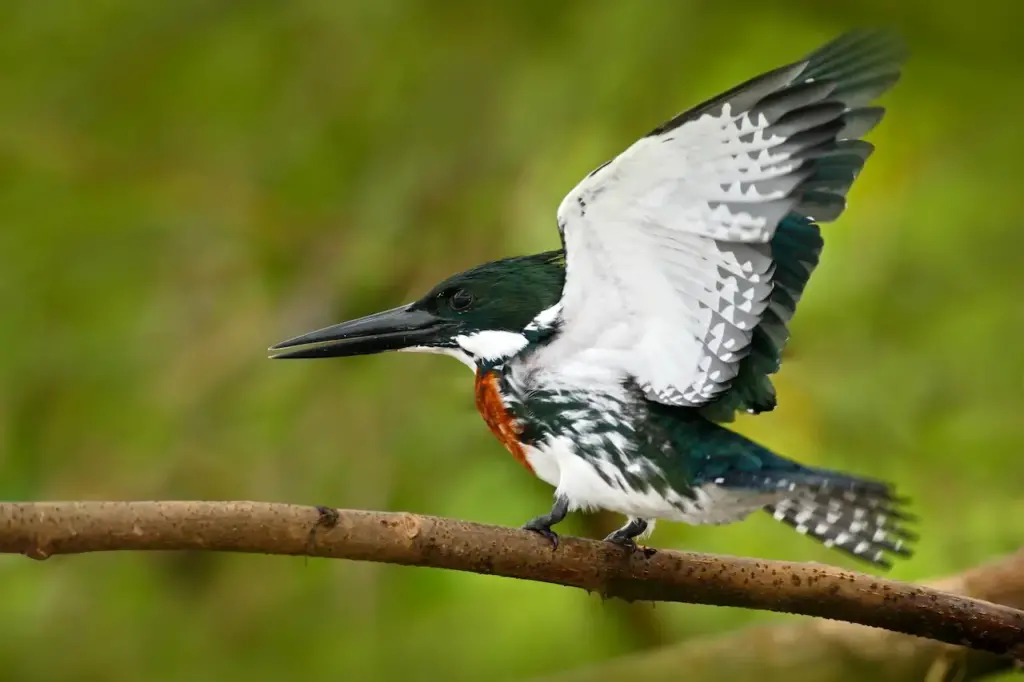
Cleanliness is important to Kingfishers; they will dive into the water to bathe, then fly to a perch to preen and dry their feathers in the sunlight. Some will even clean their heads using their wings. They will utilize a branch to clean their impressive bills, keeping them in excellent condition by scraping them back and forth.
Calls / Vocalizations
This Kingfisher’s call is often referred to as a “tick” sound. Their song, sung from a treetop, is very seldom heard. It sounds like a whistled “see-see-see-see.”


